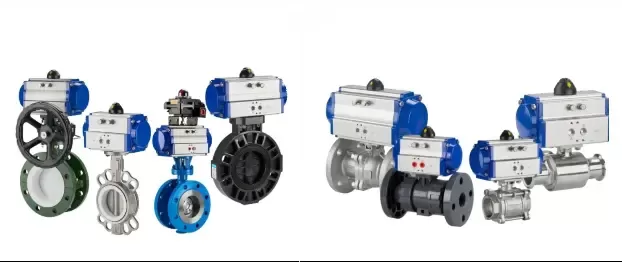Notifications

6 minutes, 6 seconds
-111 Views 0 Comments 0 Likes 0 Reviews

China Control valves are indispensable components in modern industrial systems. They regulate critical process parameters such as pressure, temperature, and flow rate, ensuring operations run efficiently, precisely, and reliably. By adjusting flow and pressure within a system—either manually or automatically—control valves fine-tune industrial processes to maintain optimal conditions.
This article provides an in-depth look at the working principles of control valves, detailing their operation, key components, and industrial applications.
A control valve is a device that modulates the flow of fluids—such as gases, liquids, or steam—within a pipeline. It achieves this by altering the size of the flow passage, thereby controlling the fluid movement rate. This modulation is typically driven by actuators that receive signals from a centralized control system.
By maintaining desired process variables, control valves contribute significantly to system performance, safety, and energy efficiency.
A control valve functions through coordinated interaction between sensors, controllers, and actuators. Here’s how it works step by step:
Sensors installed along the pipeline monitor key parameters—flow rate, pressure, temperature, etc. For example, in a steam system, pressure sensors continuously send real-time data to a control unit.
A Distributed Control System (DCS) or Programmable Logic Controller (PLC) receives the data and compares it against predefined set points. If a deviation is detected—such as pressure being too low—the system calculates the required corrective action.
Based on the deviation, the control system sends a signal to the actuator. The signal type depends on the system design:
Manual: Operators adjust the valve via handwheel.
Pneumatic: Uses compressed air—durable and suited for harsh environments.
Electric: Offers high precision and easy integration with automation systems.
Hydraulic: Ideal for heavy-duty applications requiring high force.
The actuator translates the signal into mechanical motion, altering the valve stem position and changing the flow passage:
To decrease flow: Valve opening is reduced.
To increase flow: Valve is opened wider.
For instance, narrowing a valve opening from 50% to 30% in a liquid line slows the fluid rate accordingly.
A feedback loop allows the system to constantly monitor the process variable post-adjustment. If discrepancies persist, the control system fine-tunes the actuator until the variable stabilizes within acceptable limits. This ensures dynamic, real-time control.
Control valves are available in several configurations, each suited for specific applications:
Globe Valves: Precise throttling; ideal for frequent adjustments.
Ball Valves: Quick shut-off and suitable for on/off control in high-pressure systems.
Butterfly Valves: Compact, lightweight; best for high-volume, low-pressure flows.
Diaphragm Valves: Resistant to corrosive or abrasive fluids; ideal for hygienic and chemical processes.
Plug Valves: Excellent for tight shut-off with moderate control accuracy.
Control valves are vital in numerous sectors, including:
Oil & Gas: Manage the flow of crude oil, gas, and refined products.
Power Generation: Control steam flow in turbines and cooling systems.
Chemical Processing: Maintain precise conditions in reactors and columns.
Water Treatment: Regulate flow in filtration and distribution systems.
Pharmaceuticals: Ensure accurate mixing and dosing of ingredients.
Precision: Accurate control of flow, pressure, and temperature.
Efficiency: Enhances energy use and reduces waste.
Reliability: Feedback mechanisms ensure consistent performance.
Versatility: Can be customized for different media and conditions.
Despite their benefits, control valves present operational challenges:
Cavitation and Flashing: Caused by rapid pressure drops; can damage valve internals.
Erosion and Corrosion: Harsh media or temperatures may degrade valve components.
Actuator Failures: Regular maintenance is required to avoid disruptions.
Complexity: Advanced systems require skilled personnel for setup and troubleshooting.
Control valves are critical to maintaining the stability and efficiency of industrial processes. Their ability to precisely regulate flow, pressure, and temperature helps industries achieve operational excellence.
A thorough understanding of control valve operation—from sensors to actuators—enables optimal selection, configuration, and maintenance. As automation and digital control systems evolve, so too will control valve technologies, offering smarter, more responsive solutions.
Whether in oil and gas, power generation, or water management, investing in quality control valves and adopting best practices ensures long-term reliability, safety, and performance.Know more about Google SEO Directory

